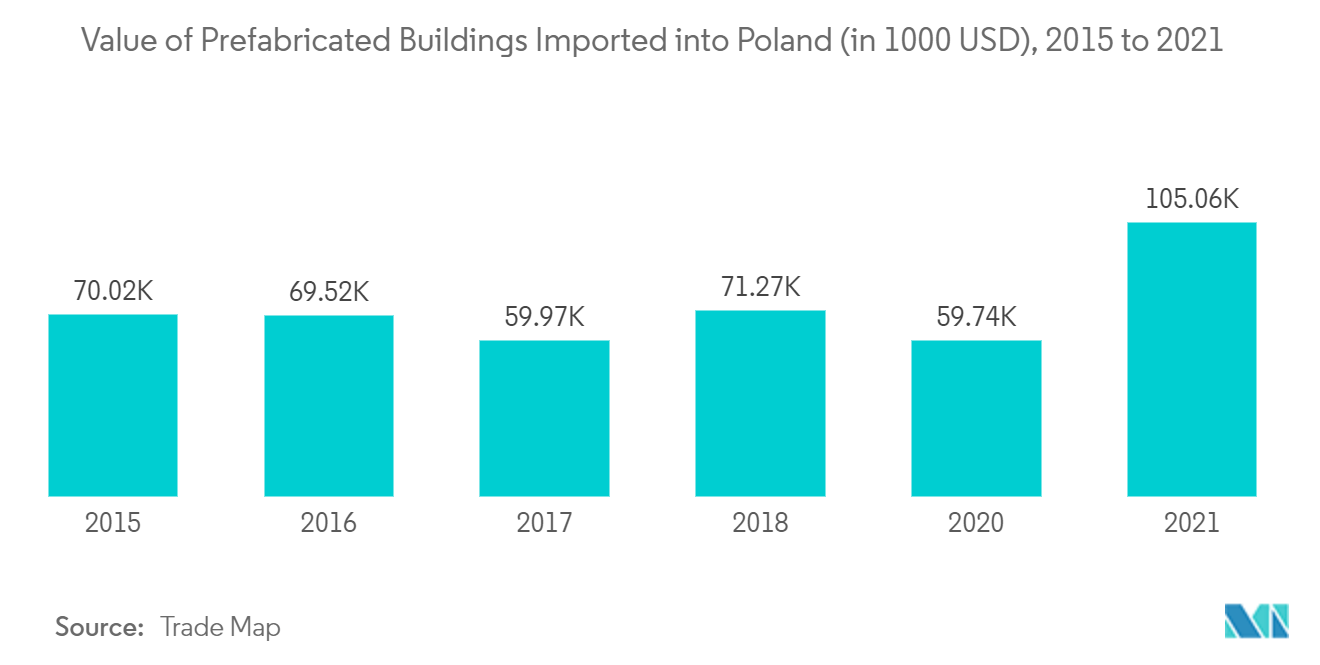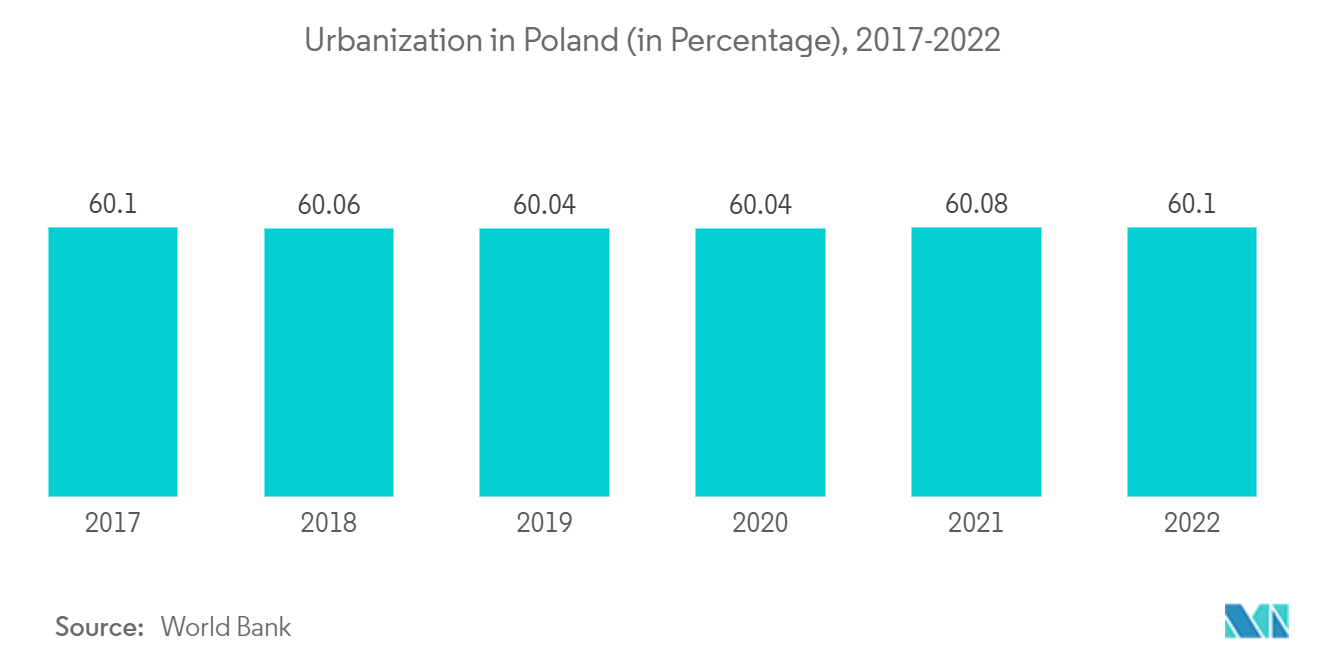Market Trends of Poland Prefabricated Buildings Industry
The Rising Demand for Prefabricated Houses in Poland is Notably Driving Market Growth
People in Poland are likely to want more convenience and security (like a guarantee) in their homes, which will drive the need for prefabricated buildings.Using prefabricated buildings can speed up construction on-site, reduce the effects of things that can't be controlled, improve quality and consistency, save money, be reused, waste less raw materials, and reduce safety risks.
Increasing demand for energy-efficient houses is an emerging trend in the market. Houses account for almost 40% of the world's energy consumption, so the energy production required for buildings is capital-intensive. Modular houses are energy efficient. As a result, the demand for airtight houses has increased significantly because they are highly insulated and energy efficient, so they can produce as much renewable energy as possible. These houses are equipped with ground-source heat pumps (GSHP) and photovoltaic (PV) systems and also have a passive solar structure in the panel housing. In addition, prefabricated contractors and architects design these house models that include features such as solar panels, wind turbines, and even rainwater systems. As a result, such factors are expected to drive the growth of Poland's prefabricated building industry during the forecast period.

Rapid Urbanization Boosts the Demand for Prefabricated Buildings in Poland
Due to population growth and a lack of housing, modular construction is becoming more popular in Poland.It is gaining momentum as an effective means to build affordable housing. A record amount of new housing was delivered for use in Poland in 2021, according to Statistics Poland (GUS), a state agency. The 235,000 new houses and apartments marked the highest figure in four decades as well as a record in terms of floor space. Modular construction is becoming popular in Poland. The rise in building material prices, urbanization, and labor shortages in Poland are the main causes of this popularity.
More money is being put into modular construction in Poland, which is also helping the prefab industry grow. Nordhus specializes in the modular construction of multi-story buildings. Each year, the company's huge 35,000 m2 site and 10,000 m2 of production space are used to make about 1,000 prefabricated construction modules.According to data, the Polish government plans to build 20,500 houses, and prefabrication is expected to play a significant role there.
In Poland, there is a lot of growth in the residential sector of the prefabricated building market. Along with the general boom in residential construction in the country, the share of prefabricated housing solutions in residential construction is increasing and now stands at more than 20%, according to industry experts. Prices are also going up, and the market is growing because there is a lot of demand for turnkey or prefabricated homes and buildings that use less energy.


